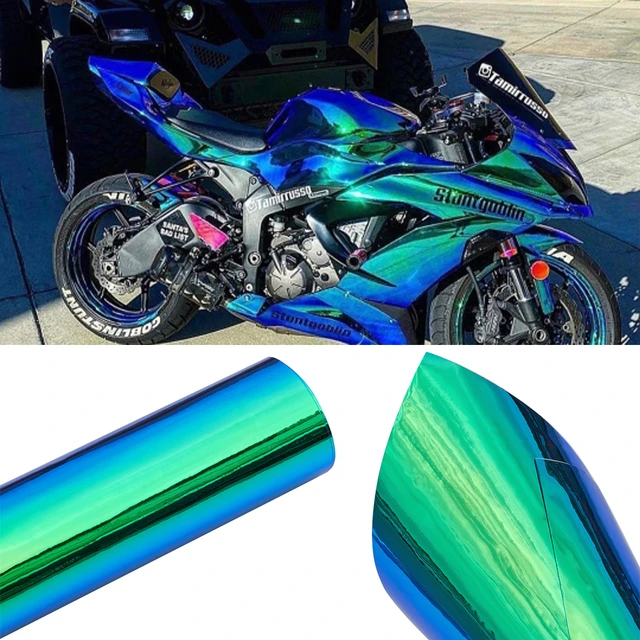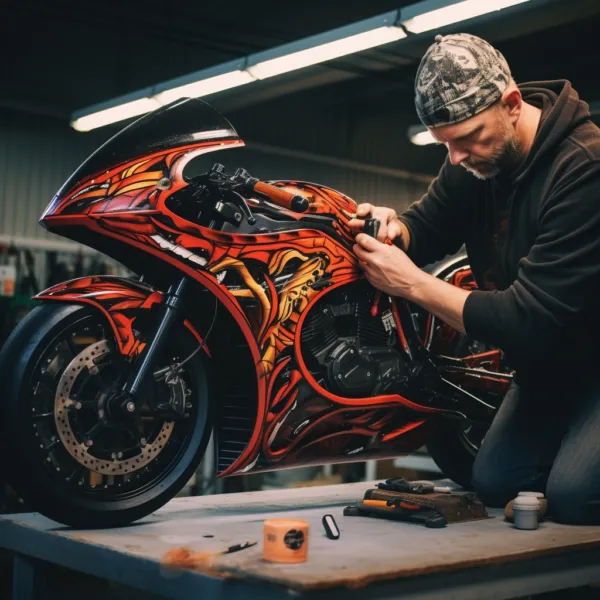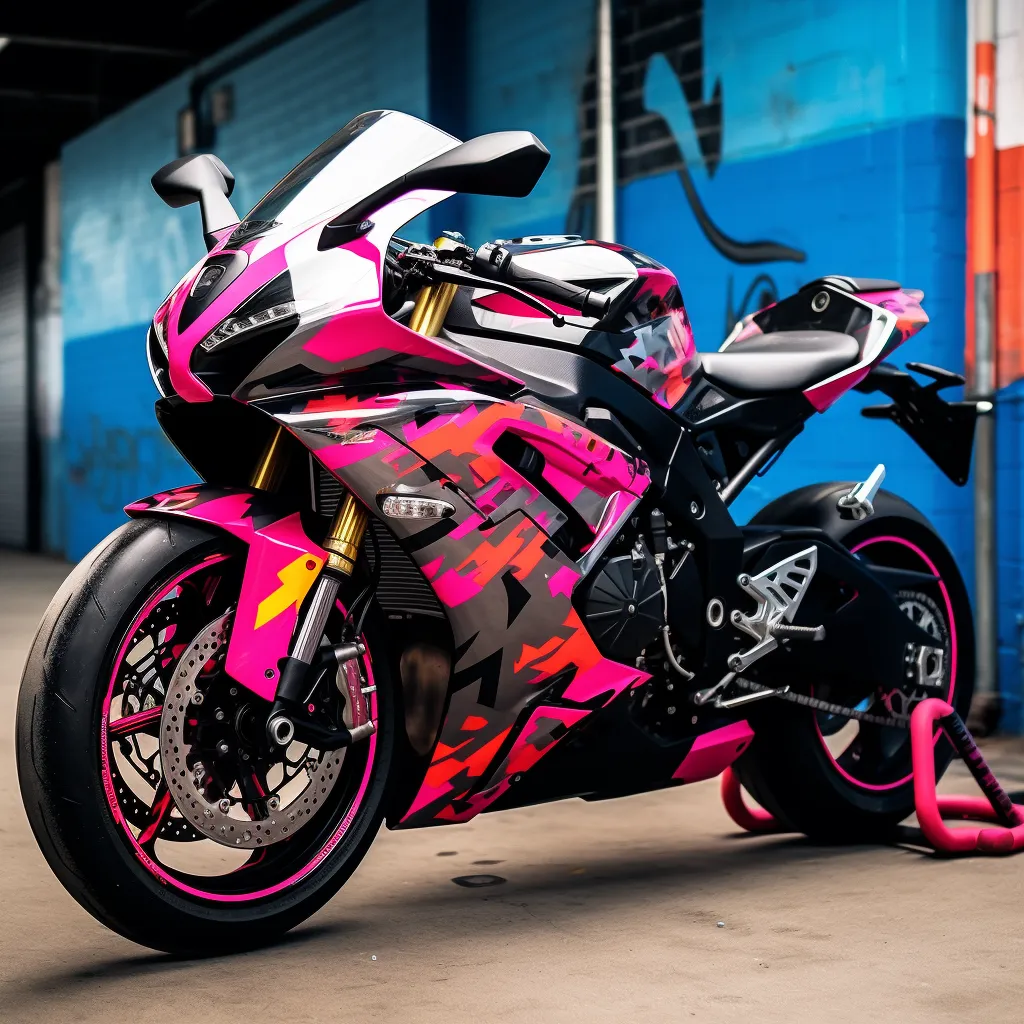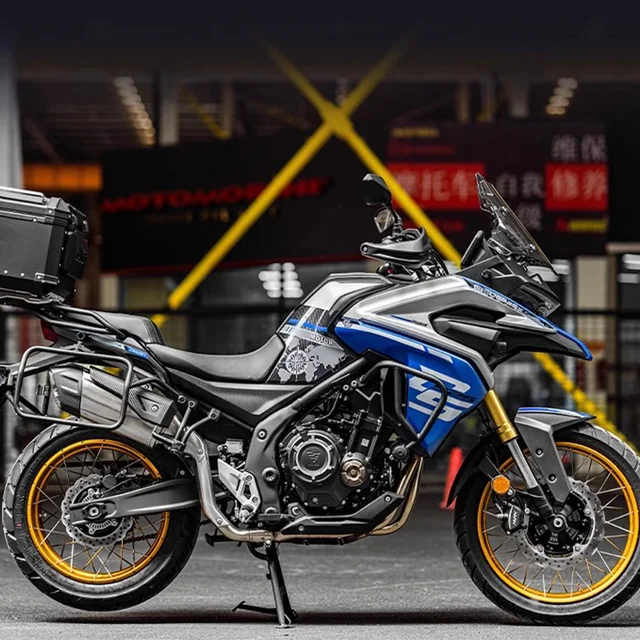Are you excited about giving your motorcycle a fresh look with a new coat of paint? Maybe you’re looking to restore an old bike to its former glory or customize your ride to reflect your unique style. Painting a motorcycle can transform its appearance and increase its value, but understanding how much it costs to paint a motorcycle is essential for proper planning. Let’s dive into the various factors that contribute to the total expense, explore the types of paint jobs available, and weigh the choice between doing it yourself or hiring a professional.
Factors Influencing the Cost
The cost of painting a motorcycle can vary widely based on several critical factors.
Type of Paint
The type of paint you choose significantly impacts the overall cost. Basic paints, such as standard solid colors, are generally more affordable. However, if you’re aiming for more specialized options like metallic, pearl, or candy paint, the costs can rise substantially. These high-end paints offer unique finishes and superior durability but come at a premium price. For instance, while a standard paint gallon might cost between $100 and $150, custom colors or special finishes can range from $200 to $500 per gallon or more.
Paint Quality
Not all paints are created equal, and the quality of the paint used can significantly affect the final cost. High-quality paints typically offer better coverage, a smoother finish, longer-lasting results, and enhanced resistance to UV rays and chemicals. Investing in premium paint can save you money in the long run by reducing the need for frequent touch-ups or repaints. Cheaper paints may save you money upfront but could result in a finish that fades, chips, or peels more quickly.
Labor Costs
Labor costs can account for a significant portion of the total expense, especially if you opt for professional services. The rates for labor can vary depending on the painter’s skill level, reputation, and location. Skilled artists who specialize in custom designs or intricate patterns often charge premium rates, while basic paint jobs might be more affordable. Labor costs can range from $500 to over $2,000, depending on the complexity and scope of the work.
Types of Paint Jobs
Different types of paint jobs have varying costs associated with them, depending on the complexity and materials involved.
Basic Paint Job
A basic paint job typically involves applying one or two solid colors without any intricate designs or patterns. This type of job focuses on refreshing the bike’s appearance with a simple, clean coat of paint. Basic paint jobs are the most affordable option and usually cost between $300 and $900. The final price depends on factors such as the motorcycle’s size, the quality of paint used, and the painter’s experience.
Custom Paint Job
Custom paint jobs are more intricate and involve detailed designs, patterns, or the use of multiple colors. These can include flames, murals, graphics, and other artistic elements that make your motorcycle unique. Custom jobs require more time, skill, and materials, which can significantly drive up costs. Custom paint jobs can range from $900 to $2,500 or more, depending on the complexity of the design and the reputation of the artist.
Specialized Finishes
Beyond standard and custom jobs, specialized finishes like chrome, matte, or powder coating offer unique aesthetics and added durability. These specialized finishes require specific equipment and expertise, often leading to higher costs. Such finishes can start at around $1,000 and may go up depending on the level of customization and the materials used.
DIY vs. Professional Services
Choosing between a DIY paint job and hiring a professional can greatly affect your costs and the final results.
DIY Paint Job
If you opt for a DIY approach, you’ll have to invest in paint, materials, and equipment. Basic supplies like sandpaper, primer, paint, and clear coat can cost between $100 and $300. While a DIY paint job may seem more economical, achieving a professional finish requires skill and experience. Additionally, the time and effort involved are considerable, and mistakes can be costly to fix.
Using a DIY kit might save money, but the results often differ significantly from professional work. DIY kits usually provide basic tools and materials, allowing for simple, single-color jobs. However, achieving a flawless finish requires significant attention to detail and practice, which might not be practical for everyone.
Professional Paint Job
Hiring a professional ensures a high-quality finish and saves you time and effort. Professionals have the necessary tools, skills, and experience to deliver a flawless paint job. While the initial cost is higher, the results are usually worth it, ranging from $300 for a basic job to several thousand dollars for custom work. Investing in a reputable professional ensures a superior outcome that reflects the price paid.
Professional services typically include prepping the motorcycle, applying multiple paint layers, adding protective coats, and detailing. The consistency and durability provided by professionals often justify the higher costs, especially for those seeking impeccable results.
Preparation Work
Proper preparation is essential for a successful paint job and can influence the total cost significantly.
Surface Preparation
Surface preparation involves cleaning, sanding, and priming the motorcycle parts to ensure the paint adheres well and lasts longer. This step is crucial and can be labor-intensive, impacting the overall cost. Professionals often include prep work in their pricing, while DIYers need to account for the time and materials needed. Failing to properly prepare the surface can lead to issues such as peeling or uneven coverage, resulting in a less-than-desirable finish.
Disassembly and Reassembly
Disassembling the motorcycle to paint individual parts is often necessary for a thorough job. This can include removing the tank, fenders, and other components. Reassembly after painting ensures everything fits correctly and functions as it should. Professionals typically include this in their labor costs, but DIYers should be prepared for the extra time and possible need for specific tools. The disassembly and reassembly process can add $50 to $200 to the final cost, depending on the complexity and number of components involved.
Additional Costs
Several additional costs might arise during a motorcycle paint job, contributing to the final price.
How much it costs to paint a motorcycle?
Decals and Graphics
Adding decals or graphics can enhance the look of your motorcycle but will add to the cost. Custom decals can range from $50 to several hundred dollars, depending on the design’s complexity and quality. Applying them requires precision, which might incur additional labor charges if done professionally. Decals and graphics are often used to personalize a bike, creating a distinctive appearance that stands out on the road.
Clear Coat and Finishing
Applying a clear coat is essential for protecting the paint and giving it a glossy finish. High-quality clear coats are more expensive but offer better protection against scratches and UV damage. Expect additional costs for multiple layers of clear coat and polishing for a flawless finish. Clear coats not only enhance the paint’s appearance but also extend its lifespan, ensuring that the newly painted surface remains vibrant and protected.
Specialty Effects
Specialty effects like pearlescent or color-shifting paints add a unique touch to your motorcycle but come at an added cost. These paints often require specific application techniques and multiple layers, increasing the time and materials needed. Specialty effects can range from $200 to $1,000 or more, depending on the desired look and complexity.
 Longevity and Maintenance
Longevity and Maintenance
The longevity of your new paint job depends on the quality of materials used and how well you maintain your motorcycle.
Regular Cleaning
Keep your motorcycle clean to maintain the paint’s appearance and extend its lifespan. Use gentle cleaners and soft cloths to avoid scratching the surface. Regular cleaning prevents dirt and grime from damaging the paint and helps maintain its shine. Washing your bike regularly can prevent buildup of contaminants that can deteriorate the paint over time.
Protective Measures
Taking protective measures can help preserve the paint. Consider using a motorcycle cover to shield your bike from the elements and parking in shaded areas to minimize UV exposure. Regular waxing can also add a protective layer, keeping the paint looking fresh. Using high-quality wax and paint sealants can provide additional protection against environmental factors, ensuring that the paint remains in good condition.
Touch-Up and Repairs
No matter how careful you are, chips and scratches can occur. Having touch-up paint on hand for quick repairs can keep your bike looking pristine. Minor touch-ups are usually affordable and can be done at home, while more extensive damage might require professional help, adding to the long-term maintenance costs.
Conclusion: How much it costs to paint a motorcycle
Understanding how much it costs to paint a motorcycle involves considering various factors, including the type and quality of paint, labor costs, additional features like decals, and protective clear coatings. Whether you choose a DIY approach or hire a professional, investing in a high-quality paint job can significantly enhance your motorcycle’s appearance and value. Proper preparation, execution, and maintenance are key to achieving long-lasting and impressive results.
By carefully planning and budgeting, you can enjoy the satisfaction of riding a beautifully painted motorcycle that reflects your style and personality. Embrace the opportunity to give your motorcycle a fresh, new look, and enjoy the ride with a renewed sense of pride.



